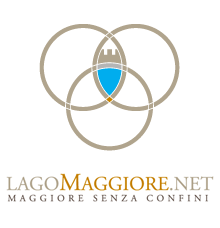
- MUSEUMS
- CHIESE, SANTUARI, LUOGHI E PERCORSI SACRI
- PARCHI, RISERVE NATURALI, ORRIDI
Omegna
Omegna overlooks Lake Orta at the most northern point, where the lake becomes a river again (Nigoglia River), which after a short stretch also welcomes the waters from the Strona Stream and then reaches the Toce River and Lake Maggiore. The little town seemingly wants to underline the bizarre nature of this tributary: it is the only one of the large Pre-Alp lakes to flow northwards:. “the river flowing upwards” according to a local saying.
The town is the largest in the Cusio area, even though it is already in the province of Verbania. Its population of 15,000 is also due to the development over the last century of companies associated with household items.
Proof of this lies in the Fondazione Museum Arti e Industria or “Forum” (Foundation for the Museum of Arts and Industry), and one of the most prestigious names in Italian industrial design associated with household items: the company Alessi was established in 1921 by Giovanni Alessi, a metal turner from nearby Strona Valley. Most of the history of Italian household items is in Crusinallo, Omegna’s main hamlet. This is home to the headquarters of Lagostina, Girmi, Piazza and Bialetti.
Omegna in history
The village’s origins are ancient as it was once Roman Vicus Omenia, then Voemenia, a fortified village in the Middle Ages with 5 gates (only Porta Antica remains today), followed by a free municipality, and was finally dominated by the Visconti and Borromeo families. The little town has much evidence of its history, from its medieval and Renaissance buildings decorated with wrought iron elements, porticoes and portals. Picturesque Piazza XXIV Aprile with its historic buildings [including the one where Antonio Rosmini (who died in Stresa), Alessandro Manzoni and Massimo d’Azeglio stayed] opens out onto the lakeshore.
Gianni Rodari was also born in Omegna, to whom the city dedicated the current Parco della Fantasia literary park.
Also worth visiting in the heart of the village is the marvellous Collegiate Church of Sant’Ambrogio dating back to the 12th century, as shown by its Romanesque façade and bell tower.
Lakes and events in Omegna
The sports and bathing facilities in town are excellent, starting in Bagnella, which can be reached on a pedestrian/bicycle path from the lakeside promenade. It is a historic destination for local bathers.
Cultural and popular events abound, including the Festival of San Vito celebrating the city’s patron saint. It currently takes place from the second half of August through the last Sunday of the month and includes a rich list of events.



